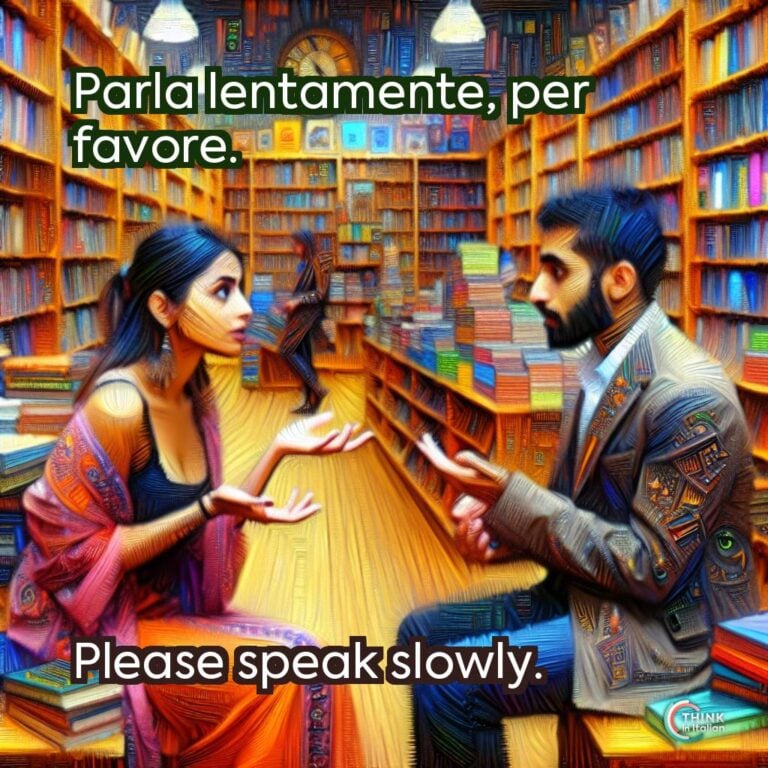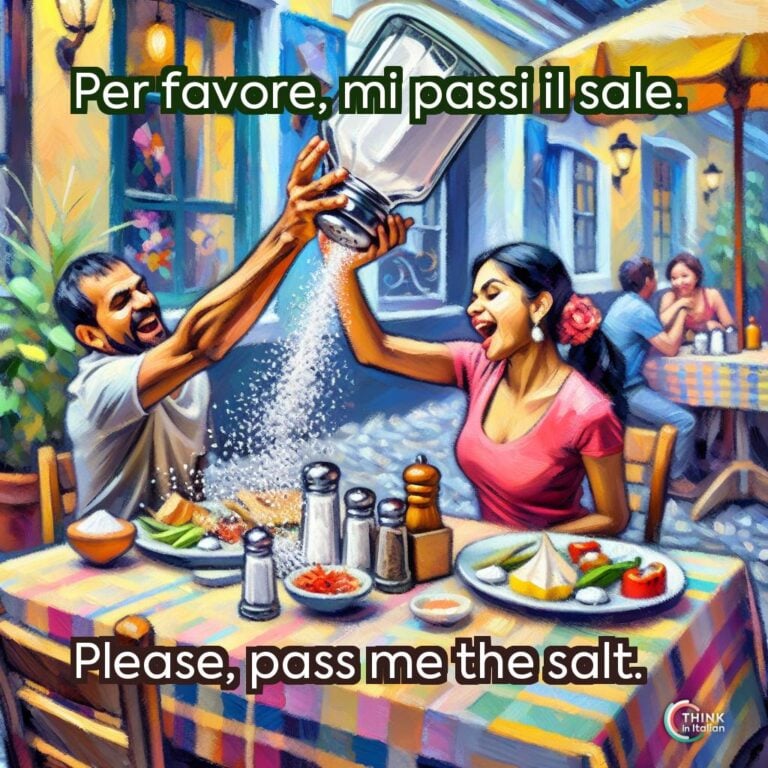Please in Italian
In Italian, the word “please” can be conveyed in several different ways, depending on the context and the level of formality, reflecting the importance Italians place on politeness and tone.
The most common translation is per favore, but other expressions suit different situations: in casual, everyday interactions you can use straightforward expressions, but in more formal settings you might need phrases that convey additional respect or gentleness.
Understanding the way you say “please” to match the situation is crucial to enhance your communication and attentiveness to the Italian culture.
Let me guide you through different ways to say “please” in Italian, with examples and contextual use.
How to Say Please in Italian
Per Favore
Per favore is the most widely used expression for “please” in Italian. It combines the preposition per (for) and the noun favore (favor), basically expressing the means by which someone needs something.
It is the go-to option for most interactions, both formal and informal, which makes it the safest and most versatile choice:
Mi passi il sale, per favore?
Can you pass me the salt, please?
Per favore is appropriate in almost any context: whether you’re speaking with friends, family, or strangers, this phrase maintains a polite tone without being overly formal, making it suitable for day-to-day requests.
Per Piacere
Per piacere is another way to say “please” in Italian, and it’s used interchangeably with per favore. It also shares the same construction, with piacere meaning “pleasure”.
Parla più piano, per piacere.
Please speak more quietly.
While it is generally a bit less formal than per favore, per piacere is still quite friendly, often used among friends and informal situations.
Per Cortesia
With per cortesia the level of formality increases a bit more. Again, the structure is the same, with cortesia literally meaning “courtesy”.
It is often reserved for professional or official settings, as it conveys a higher level of respect and politeness:
Per cortesia, può attendere un momento?
Please, can you wait a moment?
This phrase is common in formal interactions, such as in business settings, customer service, or official communications, where it shows respect and consideration.
Cortesemente
Cortesemente is an adverb, specifically one of those adverbs formed from adjectives, ending in -mente. It means “courteously” or “kindly”. It is often used in formal or professional requests:
Cortesemente, mi può inviare i documenti?
Could you kindly send me the documents?
Like per cortesia, this expression fits more in formal or professional situations, where a respectful tone is important. It is particularly useful in emails or written communication to convey a courteous request.
Gentilmente
Another synonym adverb is gentilmente, meaning “kindly” or “gently”. I personally use this one above all others to add a polite tone to a request as it is often used in formal interactions.
Structurally speaking, it is similar to cortesemente as it is common in written communication or when addressing strangers.
Mi puoi gentilmente aiutare?
Can you kindly help me?
Ti Prego
Ti prego is a way of saying “I beg you” or “please” and is derived from the verb pregare (to beg/pray) combined with an direct pronoun.
In this case, ti means “you”, but the direct pronoun can change depending on who the favor is asked to. Also the verb might change: its conjugation in fact depends on the subject, namely who is asking the favor:
Ti prego, non andartene.
Please, don’t leave.
La prego, mi faccia entrare.
I beg you, let me in.
Vi preghiamo di fare silenzio in aula.
We kindly ask you (all) to be silent in the room.
This structure is pragmatically fun, at least for me as a linguist: it can either be used in an informal setting, making it more personal and emphatic, like in situations where you’re asking a favor or are pleading with someone you’re close to.
Or it is very detached and formal, used to kindly ask a person or people to respect your request.
Si Prega di
Si prega di is the formal counterpart of the previous construction, and it is used to politely ask people to perform a specific action.
It is translated as “you are requested to”, but it makes use of the impersonal si, which makes it generical and generalized. It is commonly seen on signs, in public announcements, or in written instructions.
Si prega di non fumare.
Please do not smoke.
In that impersonal structure, it makes use of the third person singular form of the verb pregare, followed by the preposition di and a present infinitive verb, either negative or affirmative.
How to Say Thank You in Italian
Now that you’ve asked a favor, make sure you thank the person or people. “Thank you” in Italian is typically expressed with grazie.
To add more emphasis, you can say grazie mille (thanks a thousand) or grazie tante (many thanks), while in formal contexts you can say la ringrazio:
Grazie per il tuo aiuto.
Thank you for your help.






